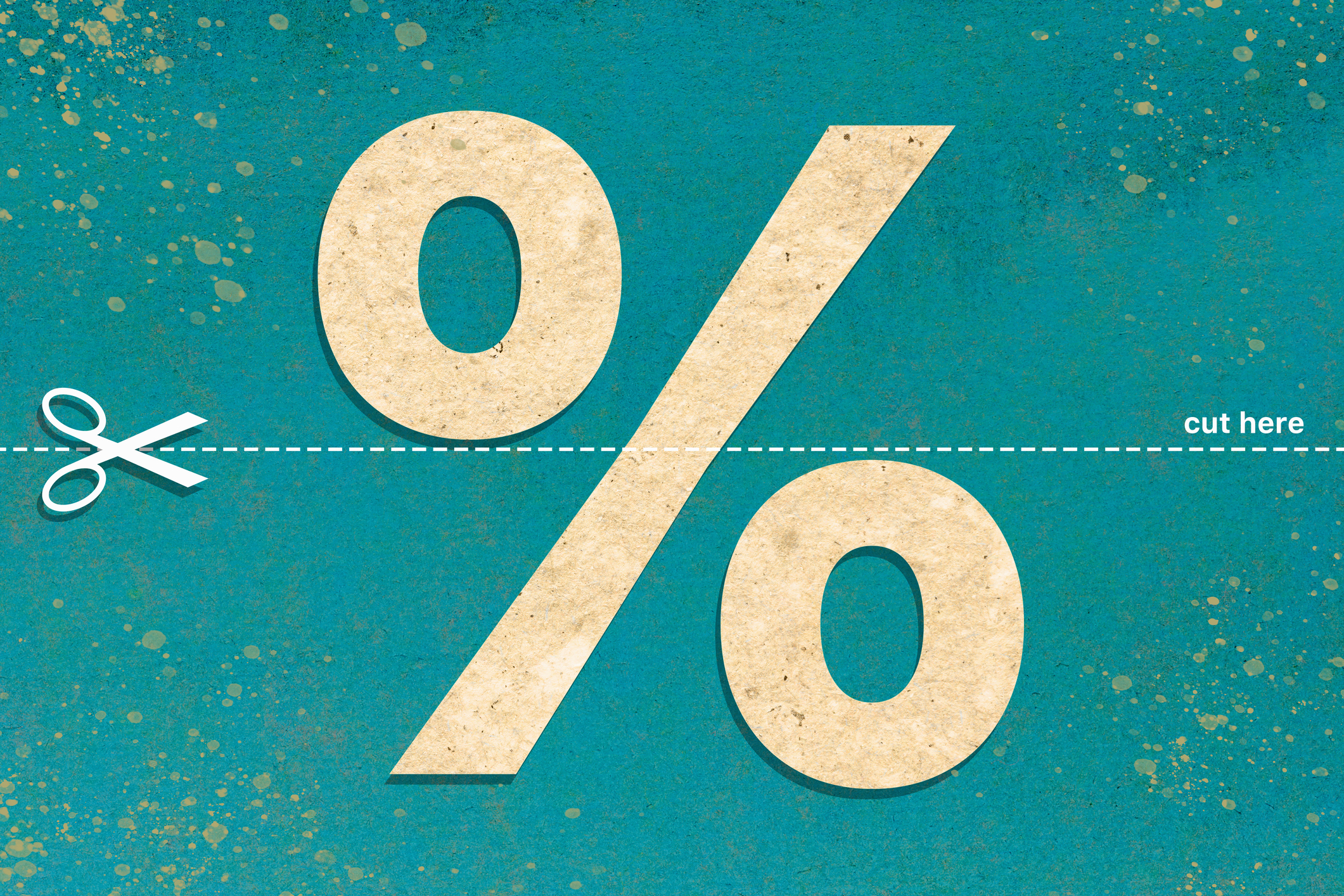
Enterprise value. Earnings before interest and taxes. Free cash flow. Weighted thingamajig foofaraw. Okay, we made up that last one. But there are scores of investing jargon and calculations — many with off-putting acronyms — that investors can use to shed light on a stock’s valuation and outlook.
Most investors are familiar with a few basic measures, such as the comparison of a stock’s price to the company’s per-share earnings, or price-earnings ratio (P/E). But professional investors and valuation experts encourage investors to add at least a few less-well-known data points to their tool kit.
“Tracking a stock’s P/E is a good start,” but only a start, says David Wessels, an adjunct finance professor at the University of Pennsylvania’s Wharton School and coauthor of a book on valuation. Here are five next-level valuation metrics that can help improve your understanding of a stock’s potential.
From just $107.88 $24.99 for Kiplinger Personal Finance
Become a smarter, better informed investor. Subscribe from just $107.88 $24.99, plus get up to 4 Special Issues

Sign up for Kiplinger’s Free Newsletters
Profit and prosper with the best of expert advice on investing, taxes, retirement, personal finance and more - straight to your e-mail.
Profit and prosper with the best of expert advice - straight to your e-mail.
Earnings yield
Anyone familiar with P/Es can quickly learn to use earnings yields because they are simply upside-down P/Es. Earnings yields are a company’s per-share earnings divided by the stock’s price, or E/P. An easy shortcut calculation is to simply divide 1 by a stock’s P/E.
Essentially, the E/P tells you how much in earnings a company generates for every dollar invested. The higher the earnings yield, the higher an investment’s margin of safety, says Michael Arone, chief investment strategist for State Street Global Advisors. Because E/Ps are expressed as a percentage, they make it simpler for investors to weigh whether to put their money in risky stocks instead of, say, buying safe Treasury bills.
As of July 31, the average earnings yield (based on the next 12 months’ expected earnings) of the stocks in the S&P 500 index was 5.1%. In today’s market, Arone suggests investors might want to think about their risk tolerance before investing in a stock or a stock fund with an earnings yield below 5% (the equivalent of a P/E above 20). “You can buy a one-year Treasury bill with lots of liquidity that pays 5.3% right now,” he points out.
EV/EBITDA
This jargony acronym can sound a little intimidating, but Wessels says investors will be well served by learning to use what is one of his favorite metrics. Reported earnings can be manipulated, he says. But EBITDA (pronounced ee-bit-DAH), for earnings before interest, taxes, depreciation and amortization, leaves less room for game-playing and gives an indication of how much cash is flowing into the company.
To get a number you can use to easily compare investments, he suggests creating a ratio by dividing EBITDA into enterprise value (EV), which is, essentially, the cost to acquire the company. Calculate enterprise value by adding together the company’s debt and the value of its outstanding stock, then subtracting its cash holdings.
Just as with P/Es, this metric tends to vary among industries and over time. Lower numbers indicate a better stock value. As of July 31, the S&P 500 was trading at an EV/EBITDA ratio of 13.8, which is only slightly higher than its 10-year median of 13.3, notes Sheraz Mian, director of research for Zacks Investment Research.
You don’t have to do any math yourself to use this measure, thankfully. EV/EBITDA numbers for each stock are commonly posted and can be found on free stock-research sites, such as Yahoo Finance.
Free cash flow

“Overwhelmingly, free cash flow is one of the most successful forecasters for stock returns,” says Arone. FCF is the cash that a company has left over after operating expenses, including interest and taxes, as well as investments in assets to maintain the business (say, computer equipment or office space).
Arone feels FCF is harder for a company to manipulate than most other earnings measures, including even EBITDA. And it reflects what is truly available to return to shareholders or reinvest in the company.
In his years of testing various stock metrics, FCF has been one of the best stock-return predictors, says Arone. He likes to divide a company’s annual FCF by the number of outstanding shares to get a per-share measure, and divides that by the stock’s price. He considers levels above 4% attractive. Free cash flow, the number of outstanding shares and a stock’s share price are all posted widely on stock-research sites.
Interest coverage ratio
Especially during times of rising interest rates, it’s important to gauge a company’s ability to cover its debts, says Zach Jonson, chief investment officer of Stack Financial Management. The interest coverage ratio divides a company’s annual or quarterly earnings before interest and taxes (EBIT) by its interest expense for the matching period.
“As interest rates have skyrocketed over the past year, many companies that rely on short-term debt will struggle to meet these obligations going forward. This indicator can be an early warning sign that the outlook for future earnings potential is bleak,” he says.
A declining trend over several quarters could indicate that the company has short-term loans with rising interest rates, which will raise costs and lower profits. A number below about 1.5 is a red flag because it indicates that most of the company’s cash flow (and, eventually, profits) will be eaten up by debt, Jonson says. Public companies generally break out their interest expenses and some version of EBIT in their quarterly and annual income statements, so this number is fairly easy to calculate.
Operating profit margin
When investors buy a stock, they are buying a share of a company’s profits. Jonson’s go-to earnings indicator is operating profit margin, which measures the percentage of revenue a company retains after removing the cost of all operating expenses except for interest and taxes.
Operating margins vary by industry and expand or contract based on economic and market conditions. But they have generally been growing over time. The percentage of annual revenues that companies in the S&P 500 have kept as operating profits has risen from about 5% in 1993 to more than 12% today, according to an analysis by Yardeni Research.
Companies in low-margin industries, such as those that sell consumer goods, are currently notching operating margins of about 6.5%. Those in information technology are keeping 20% of sales, according to Yardeni. Those differences are one reason Jonson pays more attention to the trend than the level.
“The key for us is consistency,” he says. Companies that have been able to maintain — or, better, increase — their operating margins “are the types of companies we want to hold during this challenging time,” he says. Operating margins are commonly reported by public companies and are generally available on public stock-research sites.
Related Content
Profit and prosper with the best of Kiplinger's advice on investing, taxes, retirement, personal finance and much more. Delivered daily. Enter your email in the box and click Sign Me Up.

Kim Clark is a veteran financial journalist who has worked at Fortune, U.S News & World Report and Money magazines. She was part of a team that won a Gerald Loeb award for coverage of elder finances, and she won the Education Writers Association's top magazine investigative prize for exposing insurance agents who used false claims about college financial aid to sell policies. As a Kiplinger Fellow at Ohio State University, she studied delivery of digital news and information. Most recently, she worked as a deputy director of the Education Writers Association, leading the training of higher education journalists around the country. She is also a prize-winning gardener, and in her spare time, picks up litter.
-
 The SEC Is Concerned for Older Investors and Retirement Savers. Here's What You Should Know
The SEC Is Concerned for Older Investors and Retirement Savers. Here's What You Should KnowThe SEC focusing on older investors, retirement and college savers, and private securities. Here's how those changes impact you.
-
 Vesting, Catch-Ups and Roths: The 401(k) Knowledge Quiz
Vesting, Catch-Ups and Roths: The 401(k) Knowledge QuizQuiz Test your understanding of key 401(k) concepts with our quick quiz.
-
 Why You Should Pay Attention to Company Guidance
Why You Should Pay Attention to Company GuidanceUnderstanding how corporate profit forecasts affect analysts’ estimates and stock ratings can help you make investment decisions.
-
 Why You Should Pay Attention to Company Guidance
Why You Should Pay Attention to Company GuidanceUnderstanding how corporate profit forecasts affect analysts’ estimates and stock ratings can help you make investment decisions.
-
 What Investors May Face in the New Year: Interview
What Investors May Face in the New Year: InterviewKeith Lerner, the chief market strategist and chief investment officer for Truist Wealth, speaks with Kiplinger.
-
 What to Make of a Hot IPO Market
What to Make of a Hot IPO MarketThis year's crop of initial public offerings could be even dicier than usual because of a skew toward tech and crypto.
-
 How to Position Your Portfolio for Lower Interest Rates
How to Position Your Portfolio for Lower Interest RatesThe Federal Reserve is far from done with its rate-cutting regime. This is how investors can prepare.
-
 A JPMorgan Fund Holds Its Own Thanks to a Focus on Quality
A JPMorgan Fund Holds Its Own Thanks to a Focus on QualityDespite its defensive characteristics, the JPMorgan U.S. Quality Factor holds up in good times and in bad.
-
 What Fed Rate Cuts Mean For Fixed-Income Investors
What Fed Rate Cuts Mean For Fixed-Income InvestorsThe Fed's rate-cutting campaign has the fixed-income market set for an encore of Q4 2024.
-
 Why I Trust These Trillion-Dollar Stocks
Why I Trust These Trillion-Dollar StocksThe top-heavy nature of the S&P 500 should make any investor nervous, but there's still plenty to like in these trillion-dollar stocks.
-
 Hang in There With This Value Fund
Hang in There With This Value FundPatience is required for investors in the Dodge & Cox Stock Fund, but its long-term outperformance proves it's worth the wait.
